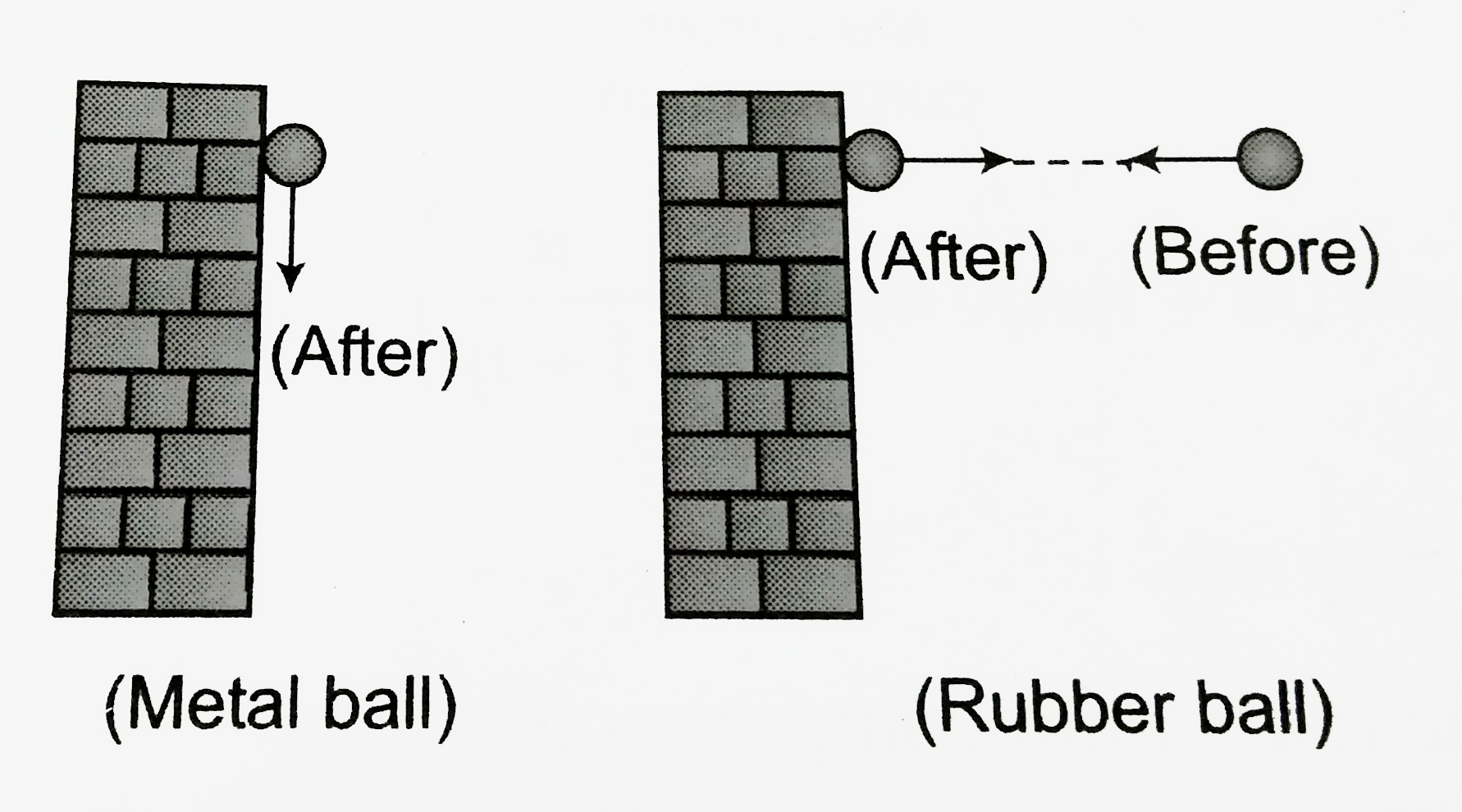A metal ball and a rubber ball , both having the same mass , strike a wall normally with the same velocity. The rubber ball rebounds and the metal ball does not rebound. It can be concluded that
the rubber ball suffers greater change in momentum
The metal ball suffers greater change in momentum
Both suffer same change in momentum
The initial momentum of the rubber ball is greater than that of metal ball.
The correct Answer is:A
Taking the right -hand side positive
For the metal ball ,
For the rubber ball ,

Topper's Solved these Questions
Similar Questions
Knowledge Check
A lead ball and rubber ball having same mass, strike normally on a smooth vertical wall with the same velocity. The lead ball falls down after striking but the rubber ball bounces back. Then
Amomentum of lead ball is greater than that of rubber ballBmomentum of rubber ball is greater than that of lead ballCthe rubber ball suffers a greater change in momentum as compared to lead ballDboth the balls suffer an equal change in momentumA metal ball hits a wall and does not rebound whereas a rubber ball of the same mass on hitting the wall the same velocity rebounds back. It can be concluded that–
Ametal ball sufferes greater change in momentumBrubber ball suffers greater change in momentum.Cthe initial momentum of metal ball is greater than the initial momentum of rubber ball.Dboth suffer same change in momentumA ball of mass m strikes a rigid walJ with speed u and rebounds with the same speed. The impulse imparted to the ball by the wall is
A2muBmuCzeroD−2mu
A ball of mass 'm' moves normal to a wall with a velocity 'u' and rebounds with the same speed. The change in momentum of the ball during the rebounding is
View SolutionA ball of mass 'm' strikes a rigid wall with speed 'u' and rebounds with the same speed. The impulse imparted to the ball by the wall is
View SolutionA body of mass m collides against a wall with the velocity v and rebounds with the same speed. Its magnitude of change of momentum is
View SolutionA metalic ball strikes a wall and drops dead whereas rubber ball having the same mass and velocity bounces back. Which of the following is correct ?
View SolutionA 10g rubber ball and a 10g clay ball are each thrown at a wall with equal speeds. The rubber ball bounces, the clay ball sticks. Which ball receives a greater impulse from the wall ?
View Solution

